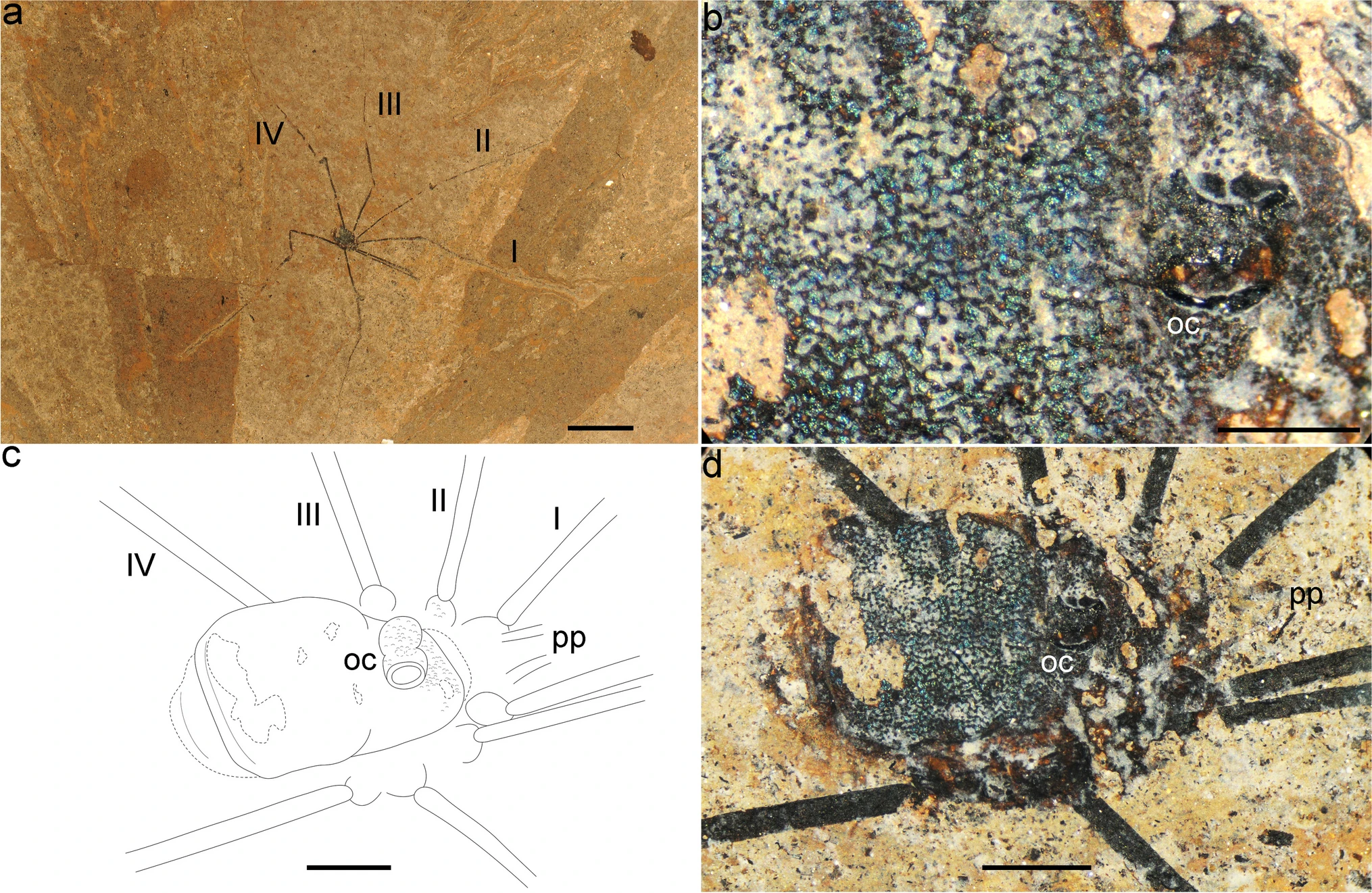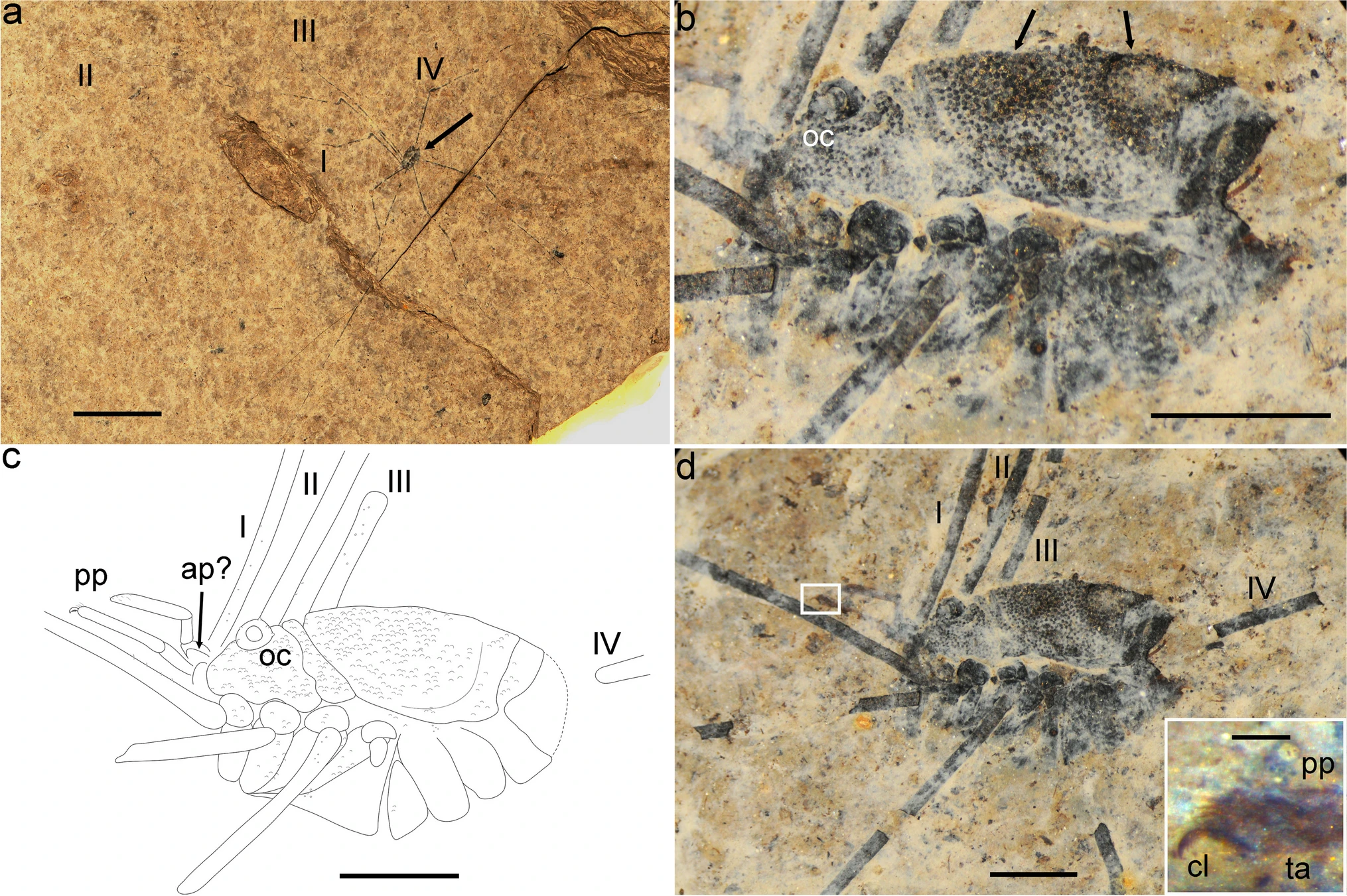Bright and shiny animals are all over the place, from deep sea worm species to electric blue tarantulas and even bright jellyfish. Now, several ancient harvestmen have been discovered in Germany, and the iridescence has even been preserved within the fossil.
This research marks the first fossil harvestmen discovered from the Eocene, roughly 48 million years ago. The specimens have the “daddy long legs” appearance with small bodies and long spindly legs. The team think that these ancient harvestmen belong to the family Sclerosomatidae, which is still around today.

48 million years old and still shining.
The specimens were found at the Messel Pit near Darmstadt in Hesse, Germany, which is usually more famous for revealing vertebrate fossils. In the middle Eocene, the area would have been subtropical to tropical forest. These specimens are the first fossil harvestmen to be described from the Messel Pit, though previously some arachnids and insects have also been found. They are the oldest fossil harvestmen from Germany, and the first fossil arachnids to have metallic iridescence preserved within the cuticle.

Leiobunum messelense, showing as the complete specimen and the body close up.
In total, the team looked at nine specimens. They were able to place the harvestmen in the family Sclerosomatidea based on a few key details such as the pedipalp claw being pectinate and the top side of the opisthosoma being fused into a single plate.
The iridescence seen on the fossils reminds the researchers of a living family of modern harvestmen that belong to the Gagrellinae subfamily. Currently, the subfamily contains around 1,000 species, across the Neotropics and northern Australia, and Malaysia.
The paper is published in the journal Palaeobiodiversity and Palaeoenvironments.
Source Link: Move Over Daddy Longlegs, Meet The 48-Million-Year-Old Iridescent "Grandpa Longlegs"